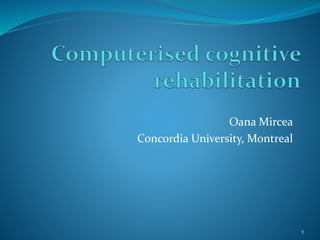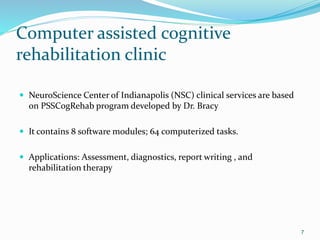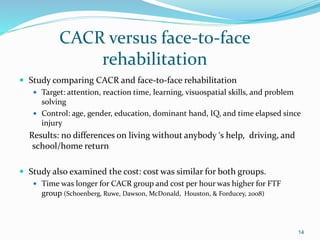Cognitive rehabilitation aims to help recover mental functions impaired by brain injury through restoration, substitution, and restructuring approaches. Computerized cognitive rehabilitation (CACR) uses computer programs and exercises to retrain impaired cognitive skills. It provides personalized feedback and reinforcement through tasks of increasing difficulty. Research shows CACR improves attention, memory, and executive functions in patients with brain injuries, learning disabilities, schizophrenia, substance abuse disorders, depression, and multiple sclerosis compared to control groups. CACR appears as effective as traditional face-to-face rehabilitation with similar costs. Issues include variability in brain injury characteristics and rehabilitation programs across studies.


















